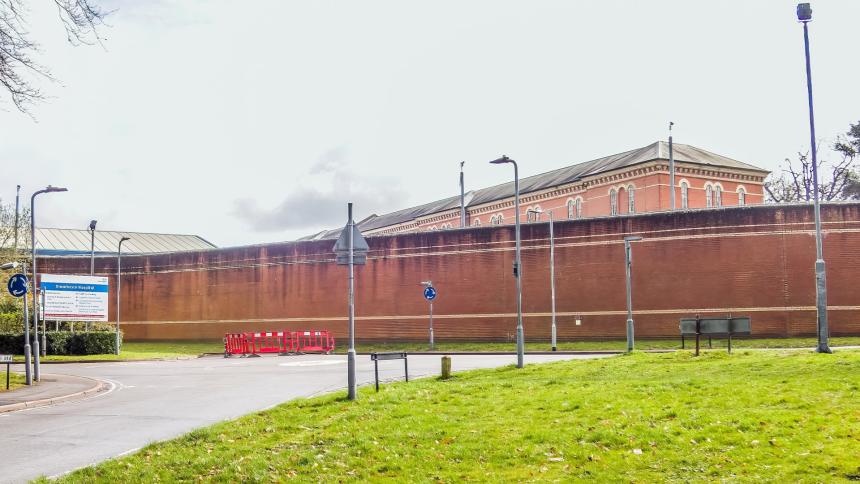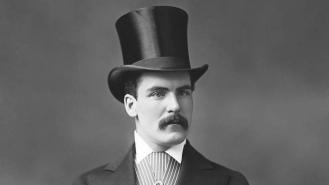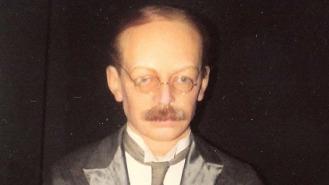
5 famous early Broadmoor patients
For 160 years, Broadmoor has been notorious in Britain as the place where the most dangerous people found to be ‘criminally insane’ are sent.
Broadmoor Hospital in Crowthorne, Berkshire first opened its doors as the Broadmoor Criminal Lunatic Asylum in 1863. It initially held 95 women, but the first men began to arrive shortly afterwards.
Many of Broadmoor’s early patients were transferred to the new facility from London’s famous Bethlem Hospital, also known as Bedlam.
Broadmoor was partly built in response to the Criminal Lunatics Act, 1860, which required the government to provide ‘better care’ for those in ‘lunatic asylums’. The old hospital building was, from 1863 until it was vacated to a new building in December 2019, a forbidding place – a vast, grim, imposing Victorian building.
Here we look at five of the most famous early patients of Broadmoor.
1. Richard Dadd
English artist Richard Dadd, born in Chatham in 1817, was so highly thought of that fellow painter William Frith called him a ‘man of genius’.
Dadd’s paintings are exceptional and evocative – but perhaps the most remarkable thing about them is that he produced his most famous pictures while incarcerated as a ‘criminal lunatic’.
At the age of 25, while travelling in the Middle East and North Africa, Dadd began to show signs of mental illness, and just after his 26th birthday, on 28th August 1843, he invited his father to join him in rural Kent for a pub dinner and a walk in the park. The next day, the body of Dadd’s father was found. Dadd had stabbed him once in the chest and cut his throat. He did this, he later said, because the Egyptian god Osiris had told him to do so as his father was possessed by demons.
Dadd was arrested shortly afterwards in France after using a razor to attack fellow passengers in a carriage. He had been on his way to try to try and kill the Austrian emperor. After 10 months in a French asylum, Dadd was sent back to Britain and committed to hospital as criminally insane. He was detained at Bethlem Hospital, where he was described as a ‘violent and dangerous patient’.
In July 1864, after two decades at Bethlem, Dadd was moved to Broadmoor Hospital. At Broadmoor, he persisted in his belief that he was possessed by evil spirits who drove his desire to commit murder, but his artistic talent was one constant in his life. During his long years at Broadmoor, Dadd was still classed as dangerous, but the staff must have trusted him to a certain extent as he was allowed to carry on producing artwork, including with the use of sharp tools.
Dadd contracted tuberculosis and died in 1886 at Broadmoor, where he is buried.
2. Edward Oxford
On 10th June 1840, 21-year-old Queen Victoria was riding in a carriage near Buckingham Palace, when 17-year-old Edward Oxford fired two shots at her. He missed, was apprehended, and the following month was convicted of high treason for attempting to assassinate the monarch.
One contemporary newspaper columnist believed that Oxford had been motivated by ‘excessive vanity’ and a desire to be notorious, rather than politics or conspiracy.
Oxford was judged insane and sent to Bethlem Hospital, before being moved to the newly-built Broadmoor in 1864. Another resident in these early years was Daniel M'Naghten, who was committed after assassinating government official Edward Drummond and whose case gave rise to the M’Naghten Rules, the legal test for criminal insanity still used today.
In January 1865, the British Medical Journal described Oxford as ‘the most orderly, most useful, and most trusted of all the inmates of Broadmoor’.
He was released from Broadmoor in 1867 and died in Australia in 1900 at the age of 78.
3. William Chester Minor
Just after 2am on 17th February 1872, William Chester Minor, an American former army officer, was walking down Belvedere Road near Waterloo Station in London. In the street, he encountered a brewer named George Merritt and shot him twice, once in the front and once in the back. During his trial in April that year it was heard that the police had had dealings with Minor before the murder and had found him to be ‘deranged’. However, at the police station on the night of the killing, he was ‘cool and collected’, freely admitting that he’d shot Merritt.
The jury found him ‘not guilty, on the ground of insanity’ and he was sent to Broadmoor.
Minor was, like Richard Dadd, very productive during his time at Broadmoor. Over many years he made contributions to the entries for over 10,000 words in the Oxford English Dictionary.
In 1910, the authorities allowed him to be transferred to a psychiatric hospital in Washington, D.C., where he was diagnosed with dementia praecox (now called schizophrenia). He was released to a care home just before his death in March 1920.
4. Christiana Edmunds
The sources differ on the year of birth for this notorious Victorian murderer, ranging from 1828 to 1837. The trial account of Christiana Edmunds, which took place at the Old Bailey in January 1872, gives her age as 34, which, assuming it’s not an error, means she was probably born in 1837.
What is known for certain, though, is that in the early 1870s, Christiana killed one person and attempted to kill several others by poisoning, with strychnine, chocolates on sale in a Brighton sweetshop. Edmunds had also poisoned the wife of a local doctor, Charles Beard, by giving her a contaminated chocolate cream.
In June 1871, after four-year-old Sidney Barker died as a result of eating one of the chocolates poisoned by Edmunds, foul play was still not suspected by the authorities. Edmunds was, at this time, in no way connected to the poisonings.
She continued in her efforts to kill by tainting treats, and it was only when Dr Beard came forward with his suspicion of Christiana having poisoned his wife that the authorities joined the dots. News of her crimes led the contemporary press to dub Christiana ‘The Chocolate Cream Killer’.
At the Old Bailey, she was sentenced to death, but she ended up being sent to Broadmoor instead, where she was detained until her death in 1907.
5. Roderick Maclean
On 2nd March 1882, Queen Victoria and her court were getting off a train in Windsor that had just arrived from London. As the royal party was walking through the station towards waiting carriages, a shot rang out. The shooter was Roderick Maclean, born in 1854. Maclean, a ‘miserable looking man’, as the press reported, had aimed his pistol at the Queen and fired, but missed. Apparently, an Eton pupil had struck Maclean with his umbrella as he was taking aim, forcing him to miss. The schoolboy was later called to Windsor Castle and thanked by the Queen for his bravery.
Maclean was arrested and tried for high treason. His trial in Reading heard that he had been sent to Somerset Lunatic Asylum in June 1880 and was certified insane. A doctor testified that Maclean was delusional and paranoid, believing that he was under threat and that everyone in the whole country was persecuting him.
It also emerged that in 1880 he had written to his sister, telling her: ‘If I cannot commit a murder one way, I will another way, and all can add is, if there is more difficulty, there may be more victims.’
After just five minutes the jury came back with a verdict, finding Maclean to be ‘not guilty, but insane’. He was ordered to be detained at Broadmoor, where, after spending nearly 40 years there, he died in June 1921.









